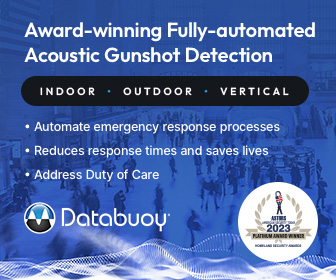
Guest Editorial By Michael Brown, Global Director of Counter-Narcotics Technology at Rigaku Analytical Devices
Television dramas would have narcotic smugglers shipping tons of illicit drugs via air, sea, and road while avoiding the U.S. Drug Enforcement Administration (DEA) and U.S. Customs and Border Protection (CBP).
In reality, today’s drug cartels are using commercial transport and delivery companies to smuggle the chemicals needed to manufacture opioids, primarily fentanyl, from China to Mexico.
Some international parcel carriers being used unwittingly are American companies that transit through the U.S. before reaching their final delivery destinations in Mexico. These delivery methods are fast, cheap, and, unfortunately, they are also effective for smugglers.
The U.S. authorities and their counterparts in the East have done much to counter the smuggling of illicit fentanyl over the past few years. These actions have pressured the drug cartels to look at new ways to maintain their enormous profits without interference.
(The Justice Department announced the arrest of two individuals and the unsealing of three indictments in the Southern and Eastern Districts of New York charging China-based companies and their employees with crimes related to fentanyl production, distribution, and sales resulting from precursor chemicals. Courtesy of the Justice Department and YouTube. Posted on Jun 23, 2023.)
Their solution, which is both ingenious and even fatal, is to ship precursor chemicals in smaller batches via commercial companies everyone uses for daily deliveries.
Tens or hundreds of thousands of parcels from the East arrive in the U.S. daily, all labeled as legal goods – and the vast majority are legal. Finding the less than one percent that contains precursor drugs at border posts is impossible.
For one, many staff which should be at the borders have been sent to deal with the migrant crisis, but even if they weren’t, searching for every package that comes into the Homeland would be impossible.
Secondly, the commercial transportation companies are on a schedule, and a delay at an airport of even one hour can cost as much as $100,000, and no company will be willing or able to take on such costs.
The result is the packages are sent to their destinations in Mexico, where they are delivered and then transported to laboratories where fentanyl and other opioids are illicitly produced before being smuggled back into the U.S.
Why is this important?
The illicit drug trade has been going on for decades, whether it was marijuana, cocaine, heroin, or the latest methamphetamines.
So why is this now more of a problem than before, and why does it require immediate attention from U.S. authorities?
The answer is that fentanyl is 50 times stronger than heroin and 100 times stronger than morphine. Its medical use (pharmaceutical-grade fentanyl) is permitted in cases of extreme pain, such as post-surgery or advanced-stage cancer.
The illicitly manufactured fentanyl is not quality controlled, therefore dangerous, extremely addictive, and has resulted in a marked increase in overdose fatalities across the United States.
(Fentanyl has become a primary cause of the opioid overdose epidemic in the past decade. But what is it about this drug that’s so dangerous? See why there’s more to the story than meets the eye. Courtesy of SciShow and YouTube. Posted on Jun 27, 2023.)
CNN reports that nearly 70,000 people in the U.S. died of drug overdoses that involved fentanyl in 2021, almost a four-fold increase over five years. The report states that fentanyl was involved in about 22 deaths per 100,000 people.
And it’s only getting worse. In June 2023, California’s Governor Newsom announced that the California Highway Patrol seized 4.2 kilograms of fentanyl in San Francisco, which is enough to potentially kill over 2.1 million people – that’s enough to kill the entire population of San Francisco 3-times over.
(In its first six weeks of deployment in San Francisco, the California Highway Patrol has seized enough fentanyl to kill all of the city’s population nearly three times over, Gov. Gavin Newsom announced Thursday. Courtesy of NBC Bay Area and YouTube. Posted on Jun 15, 2023.)
Meanwhile, the cartels are expanding their markets by lacing other drugs with fentanyl, increasing the ‘customer’ base irrespective of the excessive fatalities along the way.
What is the answer? Law enforcement from the border to the inner cities are overwhelmed; the State Department and Department of Defense are entangled in complicated geopolitical issues; the supply is so regular, reliable, and almost invisible that neighborhood internet mom-and-pop dealers are becoming common, sending supplies out via delivery companies that operate legally in every city and suburb.
They eventually sell their supplies on social media apps, perhaps identifying it as ‘protein power.’ How can American authorities contain this Opioid Overdose Epidemic?
Attack the points of supply.
While the answer is simple in theory, it is complex to execute. It requires intra- and inter-departmental cooperation to implement – not to mention international political will. The old cliché of ‘nipping the problem in the bud’ applies.
Fentanyl is an easy synthetic opioid to make, and as the San Francisco example shows, a small amount stretches a long way and brings in enormous profits.
Efforts to support the end of the supply chain, the substance users, in overcoming their addiction will only have a limited effect due to the extremely addictive qualities of fentanyl – and will have no effect on cartel profits.
Similarly, stopping the manufactured product from crossing the border is equally ineffective in the current environment, as noted in a March 2023 Fox News interview.
(Former senior DEA special agent Michael W. Brown discusses the strategies used by cartels use to smuggle drugs across the border. Courtesy of Fox News and YouTube. Posted on Mar 4, 2023.)
Attacking the initial points of the supply chain is the only realistic way to stop the precursors from getting to the labs in Mexico. These initial points are the offices and shops in eastern countries that accept parcels for shipping to Mexico.
Making it harder for people to ship precursors will cut the cartels’ supplies significantly and quickly if the U.S. can implement the necessary rules and collect the data required for analysis.
The regulatory requirements law enforcement should be looking at are quite simple.
If every person wanting to ship something to Mexico from Asia was required to provide some form of valid identification, state what was in the package they are shipping, and the staff visually inspect the package contents before accepting it, this will immediately make an impact.
And this idea is not simply a concept. While he was the Indian DEA Country Attaché for Southeast Asia, based in the DEA’s New Delhi Country Office from 2010 to 2014, the author of this article managed a specialized operation in Bangladesh.
It involved working with the Bangladeshi and Mexican authorities to implement a similar operational strategy that identified how essential precursor chemicals were being sent via express international carrier from Bangladesh to Mexico to produce methamphetamine.
Law enforcement intercepted suspicious packages, verified they held precursor chemicals and tracked them to their destination points in Mexico.
From there, the chemicals could be tracked to key middlemen who coordinate the delivery of the chemicals to the cartels’ labs. The operation successfully dismantled a small section of the Bangladesh precursor chemical supply chain to Mexican cartels.
A similar operation also took place in Nigeria with comparable results, although these were short-lived wins because the operation was limited in scope.
To be successful, this needs to be implemented at a national level, with cooperation across departments and political lines, as well as cooperation across countries.
Achieving this cooperation will require intensive diplomacy and not pointing fingers or making accusations.
(Learn More. Opioid Overdose Deaths Hit All-Time High in US, Including KC, Missouri. Courtesy of KCTV News, Saint Luke’s Health System, and YouTube. Posted on Jun 15, 2022.)
It’s all about data.
The concept above is not the ultimate solution to the opioid crisis, but it is a start and will have an immediate impact.
By collecting data from the package senders, law enforcement will be able to create a database of people and locations where precursors are sent from and thus be able to use the ‘mules’ to track the chemicals back to the manufacturers.
Similarly, data analytics can do the same on the Mexican side of the border, identifying the mules and tracking them to the labs. But this approach will require a very strong public-private partnership to be successful.
Data analysis is also critical in spotting anomalies in shipped goods before a sender is even marked as suspicious. All packages contain a description of what is being sent.
Naturally, nobody will admit to sending precursors. Therefore, Artificial Intelligence (AI) algorithms are required to analyze the millions of packaging and transportation data points to look for anomalies.
In the Bangladesh example, the chemicals were marked as green tea, pool cleaner, or protein powders. There is nothing overtly suspicious about that, except when you realize that all those products are already sold in Mexico.
There was no need to spend the money importing them from Asia in small single orders when they were on the shelves at the local store.
This concept may seem overly simplified, but this type of analysis, performed on thousands of packages shipped each hour, can point out potential precursor suppliers. Instead of holding up planes for hours or days, border authorities can go straight to the correct barrel, open it, and extract the suspicious items.
(While numerous pharmaceutical or laboratory-grade compounds exist as white powders and clear liquids, many real-world threats commonly encountered by military and first responder personnel are colored by impurities from crude synthetic processes, low-grade precursors, or from intentionally added pigments and dyes to conceal. Courtesy of Rigaku Analytical Devices and YouTube.)
With current Machine Learning techniques and powerful AI processing capabilities, false alerts will quickly decrease as the AI continues to ‘learn.’ And when the cartels shift their modus operandi to avoid the ‘green tea trap,’ AI will be able to adjust to their new schemes quickly.
Sadly, once again, the problem of cooperation raises its head. Collecting and using this data within the bounds of the law and honoring confidential requirements will require close cooperation and data sharing between agencies. Some of this cooperation became a reality after 9/11 when intelligence agencies started sharing more data, which later identified and prevented numerous attacks against the Homeland.
Sharing the appropriate data with law enforcement agencies will enable them to focus their limited resources where they have the best impact, limiting the spread of the most addictive and dangerous drug ever seen on the market.
There’s a reason the Roman military constructed roads throughout its empire, and the U.S. built the transcontinental railways system – the supply chain.
No army, no operation, and as the world discovered post-COVID, no business (or cartel) can continue if it does not have a reliable supply chain that ensures raw materials are available when required so that operations can continue.
The solution, therefore, lies in preventing the manufacture of illicit fentanyl by attacking the initial points of the supply chain.
If law enforcement controls that point, it can control and manage the rest of the supply chain, either by starving it of the precursor chemicals or following the packages down the rabbit hole into the kingdoms of the cartels.
About the Author
Michael W. Brown is the global director for counter-narcotics technology at Rigaku Analytical Devices. He has a distinguished career spanning over 32 years as a Special Agent for the Drug Enforcement Administration (DEA).

Most recently, Brown was the DEA Headquarters staff coordinator for the Office of Foreign Operations for the Middle East-Europe-Afghanistan-India. Before that he served as the country attaché in India and Myanmar, providing foreign advisory support for counter-narcotic enforcement.
Brown also spent ten years in Pakistan as a special advisor to the US Embassy on various law enforcement issues. He is a United States Ranger Training Battalion graduate with a master’s degree in Interdisciplinary Technology and Management from the University of Eastern Michigan. Contact him at michael.brown@rigaku.com.
Rigaku Analytical Devices Nominated in 2023 ‘ASTORS’ Homeland Security Awards Programs
































